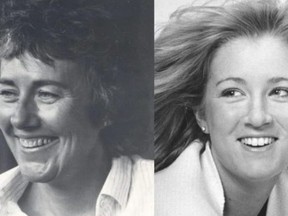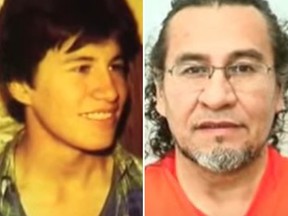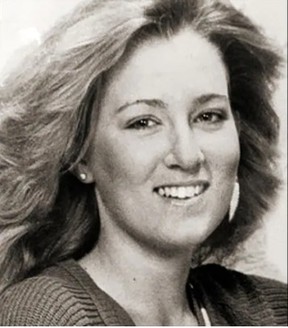Detectives will closely examine Joseph Sutherland's movements around Ontario

Cops called him a “ghost.”
A violent, homicidal maniac who viciously sexually assaulted and stabbed 22-year-old career girl Erin Gilmour and 42-year-old single mom of four Susan Tice during a four-month period in 1983. And then, as quickly as he emerged, he faded into the shadows.
As the Canadian national soccer teams head to their respective FIFA World Cups, Derek Van Diest is on the scene to cover all the action. Expect expert insights and analysis in your inbox daily throughout the tournaments, and weekly on Thursdays for the rest of the season.
Thanks for signing up!
A welcome email is on its way. If you don't see it, please check your junk folder.
The next issue of Corner Kicks with Derek Van Diest will soon be in your inbox.
On Monday, Toronto Police cold case detectives announced that they finally had a suspect.
Joseph George Sutherland, 61, was arrested Thursday in Moosonee by the OPP and charged with two counts of first-degree murder. He will be transferred south to Toronto in the coming days to face arraignment for the two slayings.

Det. Sgt. Steve Smith — who also cleared the 1984 Christine Jessop murder — said that at the time of the particularly violent killings, Sutherland was living in Toronto.
“And then he moved around Ontario before finally moving to Moosonee, he was a ghost, a nobody,” Smith said. “He was never on our radar. He had no criminal record and frankly, without the technology, finding him would have been like finding a needle in a haystack.”
But the arrest of Sutherland raises more, disturbing questions: Could he be linked to more victims?
According to Smith, detectives will closely examine Sutherland’s movements around the province. They have also reached out to smaller communities in their hunt for similar cold-case murders.
“We’re going to take every possible measure to ensure (the suspect) is not (allegedly) responsible for any other crimes across the province,” the veteran detective said.

Starting with California’s Golden State Killer, genetic genealogy has been a game changer for cold-case detectives from Texarkana to Toronto. As in the Jessop case, Toronto investigators used the genetic testing company Othram, which built a family tree of the suspect’s nearest relatives.
That led them to Sutherland, who was issued a warrant to provide a DNA sample. The detective noted that the accused seemed to know one day he would receive a knock on his door.
Smith said that IGG eliminates tens of millions of suspects but cautioned it’s “not a magic bullet” and once Othram identifies a family group, investigators begin working backwards.
“And as one genealogist told me, genealogy is like fishing: You never know how long it’s going to take to catch a fish,” Smith said.
With more than 700 unsolved homicides on the books dating back to the 1950s, the cold case chief said that a number of those investigations — particularly ones with a sexual component — can be solved by genetic genealogy.
Smith, Chief James Ramer, Supt. Pauline Gray and others saluted the generations of detectives who doggedly pursued an arrest even after continually running into brick walls.
Their efforts were most profoundly felt by the victims’ families.

“It’s a full spectrum of emotions,” Gilmour’s brother Shaun McGowan told reporters Monday. “This has affected us our entire lives and brought so many memories of Erin. She was magnetic, full of life … she was aged 22 and had her whole life ahead of her.”
McGowan added that their mother, Anna, died two years ago, never knowing who murdered her only girl.
“But I’m thankful to the incredible detectives, they never gave up trying to solve the case,” he told a press conference. “It speaks to the doggedness of Toronto Police.”
The two disparate slayings were linked in 2000 but after that, cops hit a brick wall. The suspect’s DNA was not in the system. Then came investigative genetic genealogy — and the dominoes fell.
“This is the most complicated case I’ve worked on in my career,” Smith told the Sun in 2021.
“There’s nothing even close to it, the twists and turns we’ve had in this.”
bhunter@postmedia.com
@HunterTOSun


